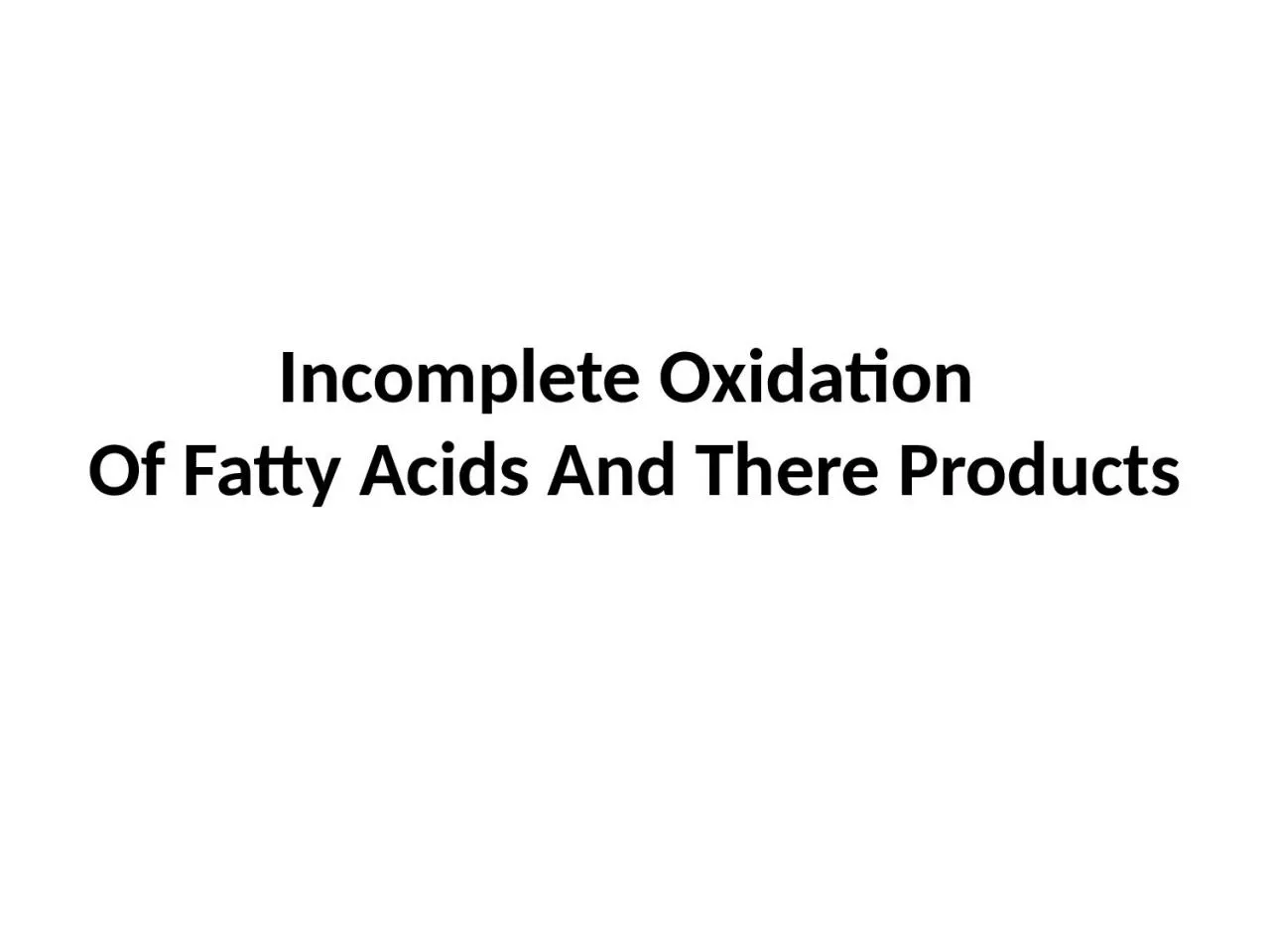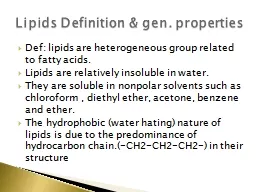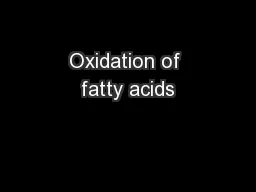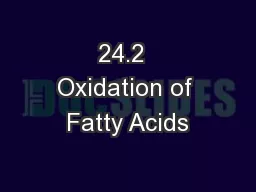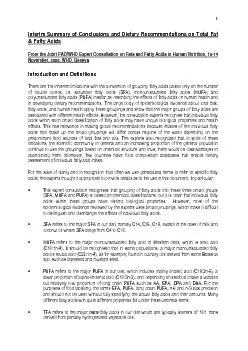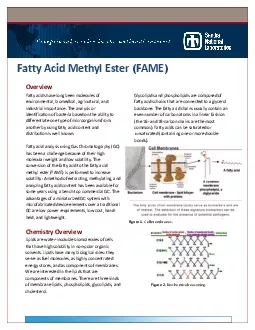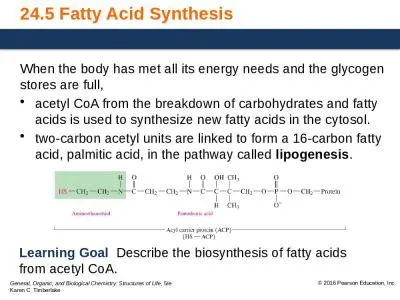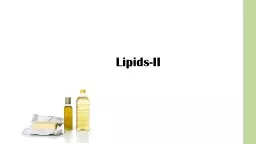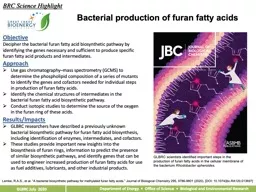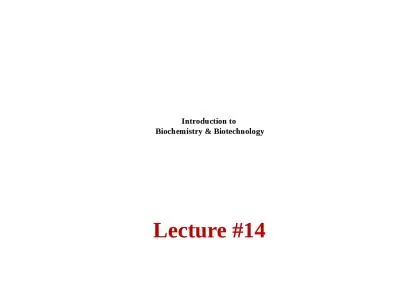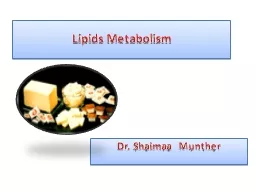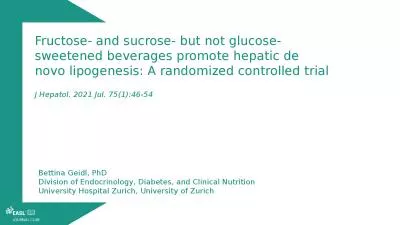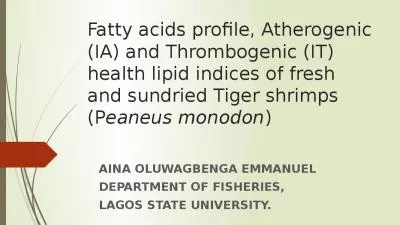PPT-Incomplete Oxidation Of Fatty Acids And There Products
Author : daniella | Published Date : 2022-06-15
Ketone Body Metabolism Ketogenesis And Ketolysis OR Formation And Breakdown Of Ketone Bodies Formation And Fates Of Ketone Bodies In Human Body What are Ketone
Presentation Embed Code
Download Presentation
Download Presentation The PPT/PDF document "Incomplete Oxidation Of Fatty Acids And..." is the property of its rightful owner. Permission is granted to download and print the materials on this website for personal, non-commercial use only, and to display it on your personal computer provided you do not modify the materials and that you retain all copyright notices contained in the materials. By downloading content from our website, you accept the terms of this agreement.
Incomplete Oxidation Of Fatty Acids And There Products: Transcript
Ketone Body Metabolism Ketogenesis And Ketolysis OR Formation And Breakdown Of Ketone Bodies Formation And Fates Of Ketone Bodies In Human Body What are Ketone Bodies When Where Why . Equine Nutrition AGR 479/564. Introduction. Why are fats or oils used in equine diets?. To increase in energy density. Substitute energy for CHO’s. However, even more so. Improved energetic efficiency. Lipids are relatively insoluble in water.. They are soluble in . nonpolar. solvents such as chloroform , diethyl ether, acetone, benzene and ether.. The hydrophobic (water hating) nature of lipids is due to the predominance of hydrocarbon chain.(-CH2-CH2-CH2-) in their structure. . Introduction. Central energy yielding pathway in many tissues. As fuel. Chemically inert. Releases lots of energy. Oxidation of fatty acids. Occurs in 3 steps. Oxidative removal of successive 2 carbon units in the form of acetyl . A large amount of energy is obtained when fatty acids undergo. oxidation in the mitochondria to acetyl CoA.. beta oxidation, (. β . oxidation). . which removes two-carbon segments containing the alpha and beta carbon from the carboxyl end of the fatty acid.. -------------Level of Evidence------------------------------------------- Fat/FA Measure Numeric amount Convincing Probable Possible Insufficient U-AMDR: 20 OverviewFatty Acid Methyl Ester FAMEGlycolipids and phospholipids are composed of fatty acids chains that are connected to a glycerol backbone The fattyacid chains usually contain an even number of ca When the body has met all its energy needs and the glycogen stores are full, . acetyl CoA from the breakdown of carbohydrates and fatty acids is used to synthesize new fatty acids in the cytosol.. two-carbon acetyl units are linked to form a 16-carbon fatty acid, . A-Saturated Fatty Acids:. Fatty acids have no double bonds ,side chain are (alkane).. 1) Short chain FA:. From 4 to 10 Carbon atoms ,and present as . liquid. in room Temp. . 2) Long chain FA:. More than 10 Carbone atoms, present in . Lemke. , R.A.S., et al. “A . bacterial. . biosynthetic. . pathway. for . methylated. . furan. . fatty. . acids. .” Journal of . Biological. . Chemistry. 295, 9786-9801 (2020). [DOI: 10.1074/jbc.RA120.013697]. Course Code: ZOOL 4008 (Biochemistry and Metabolism⤀ M.Sc. (Zoology), Semester – II Dr. Shyam Babu Prasad Assistant Professor Department of Zoology Mahatma Gandhi Central University (MGCU), M Lecture #14. Lehninger. . Principles of Biochemistry. Chapter 14-23. Overview of Metabolic Pathways-III. Chapter 17. Fatty Acid Catabolism. Digestion, Mobilization & Transport of Fats. Digestion, Mobilization & Transport of Fats. . Munther. . Lipids. Lipids are compounds that are insoluble in water, but soluble in an organic solvent (e.g., ether, benzene, acetone, chloroform). “lipid” composed mainly from C, H, O . • The main feature, in all lipids, is the large number of carbon-hydrogen bonds which makes them . University Hospital Zurich, University of Zurich. Fructose- and sucrose- but not glucose-sweetened beverages promote hepatic de novo lipogenesis: A randomized controlled trial. J . Hepatol. . 2021 Jul. 75(1):46-54. P. eaneus. monodon. ). AINA OLUWAGBENGA EMMANUEL. DEPARTMENT OF FISHERIES, . LAGOS STATE UNIVERSITY.. TABLE OF CONTENT. INTRODUCTION . AIMS OF THE RESEARCH. MATERIALS AND METHODS. RESULTS. CONCLUSIONS.
Download Document
Here is the link to download the presentation.
"Incomplete Oxidation Of Fatty Acids And There Products"The content belongs to its owner. You may download and print it for personal use, without modification, and keep all copyright notices. By downloading, you agree to these terms.
Related Documents

